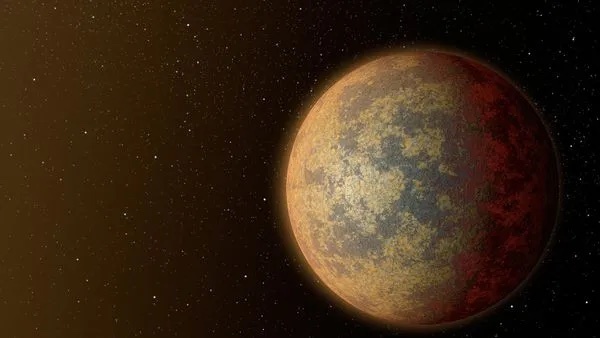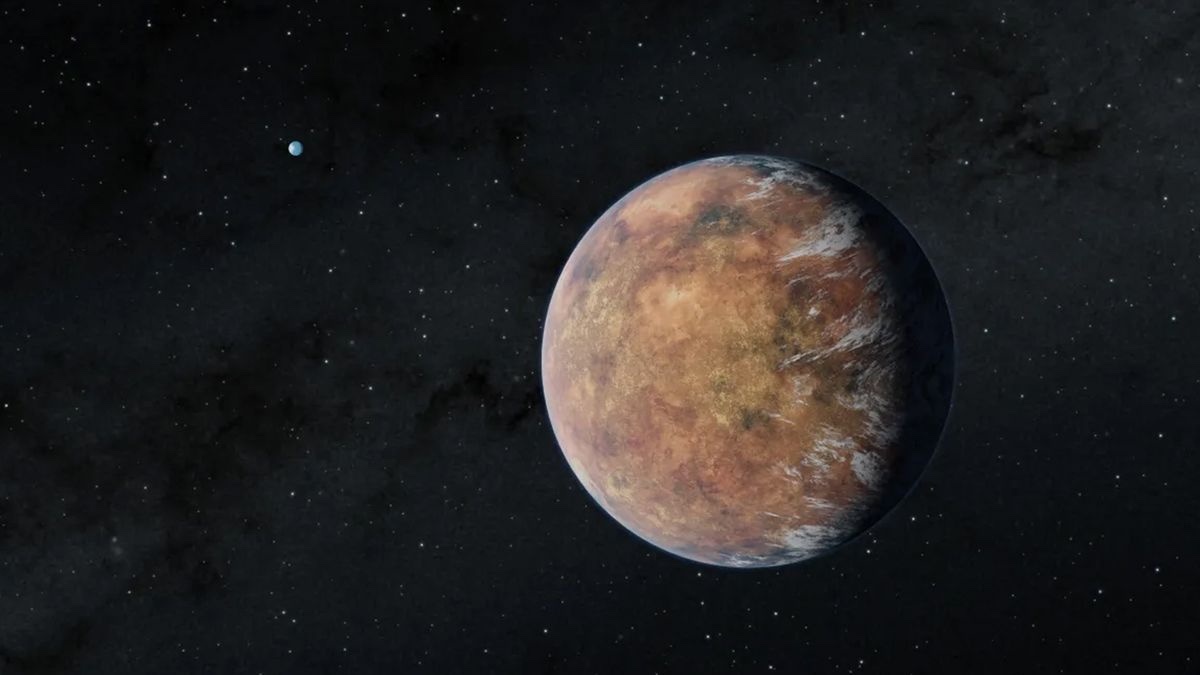15.11.2023
Several exoplanets at the edge of our galaxy could have formed continents — and advanced life — 5 billion years earlier than Earth, new research suggests.

This artist's rendition shows one possible appearance for the planet HD 219134b, the nearest confirmed rocky exoplanet found to date outside our solar system. (Image credit: NASA/JPL-Caltech)
The oldest continents in our galaxy may have arisen 5 billion years before Earth’s, new research suggests — and that means there may be multiple worlds in the Milky Way harboring alien life even more advanced than our own.
Astrobiologists think a planet needs to have certain features to support life: oxygen in its atmosphere, something to shield organisms from dangerous radiation and liquid water, for a start. Although big land masses aren't strictly necessary for living things to emerge, Earth's history shows that they're important for life to thrive and exist for long periods of time. So, if an exoplanethad continents before Earth, it follows that there might be older, more advanced life on that world.
This line of thought led Jane Greaves, an astronomer at Cardiff University astronomer in the U.K., to answer the question: When did the first continents appear on a planet in our galaxy? Turns out, two exoplanets' continents — and perhaps life — may have arisen four to five billion years before Earth's.
If life on another planet had a five-billion-year head start, it "could potentially host life more evolved than us," Greaves wrote in a study, published in the September issue of the journal Research Notes of the American Astronomical Society.
Continents form due to plate tectonics, the movement of plates of rock that float atop the molten innards of a planet. Heat from a planet's core keeps that magma from hardening and halting continents' movement. That heat comes from radioactive elements — like uranium-238, thorium-232, and potassium-40 — in the planet's core, which give off energy as they decay.
Most of those radioactive elements came from catastrophic cosmic events, like supernova explosions and collisions between the dead husks of giant stars, known as neutron stars. Traces of those elements can be detected in the wavelengths of light that stars emit. In her new work, Greaves used levels of uranium-238 and potassium present in nearby stars, plus the ages of stars as measured by the Gaia satellite, to estimate when a hypothetical rocky planet around each of these stars became hot enough for plate tectonics to emerge.
She found that the first continents formed around nearby sun-like stars up to 2 billion years earlier than Earth's plate tectonics began. The oldest continents of a nearby star are around HD 4614, about 20 light-years from Earth. Earth's starting time, however, is average for our cosmic neighborhood.
Two stars stand out from the pack, though: The planets of two stars a bit smaller than our sun (HD 76932 and HD 201891), located 70 to 110 light-years away from us respectively in a region known as the "thick disk", could have formed continents up to 5 billion years earlier than us. Based on her sample of just 29 stars and astronomers' current best estimates for how likely a planet is to be habitable, Greaves wrote, "there could be two systems in this sample alone with biospheres more advanced than here on Earth."

Newly discovered Earth-size planet TOI 700 e orbits within the habitable zone of its star in this illustration. Its Earth-size sibling, TOI 700 d, can be seen in the distance. (Image credit: NASA/JPL-Caltech/Robert Hurt)
Determining potentially interesting and habitable planets, like these identified by Greaves, is crucial preparation for NASA's future Habitable Worlds Observatory, which astronomers will use to observe Earth-like planets — and hopefully signs of life — in the 2040s. Greaves hopes future work will analyze more stars to determine if they could have planets with plate tectonics, which, she wrote, "could help to uncover more old systems where life on land could pre-date that on Earth."
Quelle: SC

